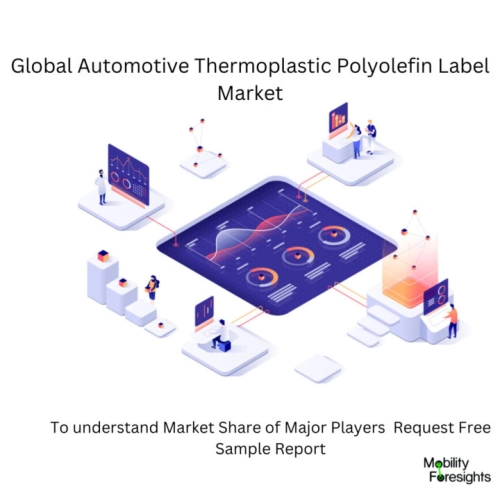
- Get in Touch with Us

Last Updated: Apr 25, 2025 | Study Period: 2024-2030
Thermoplastic Polyolefin (TPO) refers to a blend material composed of polyolefin (PP or PE), rubber and some filler (talc, glass, carbon fiber, etc.).
These are members of the TPE (thermoplastic elastomer) family. They generally possess good hardness, flex fatigue and impact resistance.
Common uses for polyolefins include shrink wrap, packaging (including food and electronic packaging), producing consumer goods and industrial products (including toys), manufacturing materials (including structural panels and piping systems), fibres for use in clothing (including waterproof items such as wetsuits).
Polyolefins, also called polyalkenes, are the largest class of commodity thermoplastics. They are polymers of simple alkenes such as ethylene, propylene, butenes, and pentenes, and copolymers thereof.A polyolefin is a type of polymer with the general formula (CH2CHR)n where R is an alkyl group.
They are usually derived from a small set of simple olefins (alkenes). Dominant in a commercial sense are polyethylene and polypropylene. More specialized polyolefins include polyisobutylene and polymethylpentene.

Global automotive thermoplastic polyolefin lables market accounted for $XX Billion in 2023 and is anticipated to reach $XX Billion by 2030, registering a CAGR of XX% from 2024 to 2030.
The chemistry between rubber and plastic is bridged by ENGAGE Polyolefin Elastomers (POEs), opening up new possibilities. Formulators can achieve excellent performance with an unequalled balance of attributes thanks to the innovative functional opportunities provided by INSITETM Technology.
Thermoplastic olefins (TPO) can now achieve important performance goals in terms of low temperature impact, melt flow, melt strength, flexibility, and softness thanks to ENGAGE POEs.
By digitising the performance of new sustainable automotive-grade polypropylene (PP) compounds, Hexagon's Manufacturing Intelligence division and Sumika Polymer Compounds Europe (SPC Europe), a leading producer of thermoplastic compounds, are enabling engineers to design components that are more recyclable and have a smaller carbon footprint for future vehicles.
With over 40 years of experience producing thermoplastics, Sumika Polymer Compounds Europe, a subsidiary of the Japanese company Sumitomo Chemical, offers a variety of thermoplastic compounds and elastomers made of polyolefins.
| Sl no | Topic |
| 1 | Market Segmentation |
| 2 | Scope of the report |
| 3 | Abbreviations |
| 4 | Research Methodology |
| 5 | Executive Summary |
| 6 | Introduction |
| 7 | Insights from Industry stakeholders |
| 8 | Cost breakdown of Product by sub-components and average profit margin |
| 9 | Disruptive innovation in the Industry |
| 10 | Technology trends in the Industry |
| 11 | Consumer trends in the industry |
| 12 | Recent Production Milestones |
| 13 | Component Manufacturing in US, EU and China |
| 14 | COVID-19 impact on overall market |
| 15 | COVID-19 impact on Production of components |
| 16 | COVID-19 impact on Point of sale |
| 17 | Market Segmentation, Dynamics and Forecast by Geography, 2024-2030 |
| 18 | Market Segmentation, Dynamics and Forecast by Product Type, 2024-2030 |
| 19 | Market Segmentation, Dynamics and Forecast by Application, 2024-2030 |
| 20 | Market Segmentation, Dynamics and Forecast by End use, 2024-2030 |
| 21 | Product installation rate by OEM, 2023 |
| 22 | Incline/Decline in Average B-2-B selling price in past 5 years |
| 23 | Competition from substitute products |
| 24 | Gross margin and average profitability of suppliers |
| 25 | New product development in past 12 months |
| 26 | M&A in past 12 months |
| 27 | Growth strategy of leading players |
| 28 | Market share of vendors, 2023 |
| 29 | Company Profiles |
| 30 | Unmet needs and opportunity for new suppliers |
| 31 | Conclusion |
| 32 | Appendix |